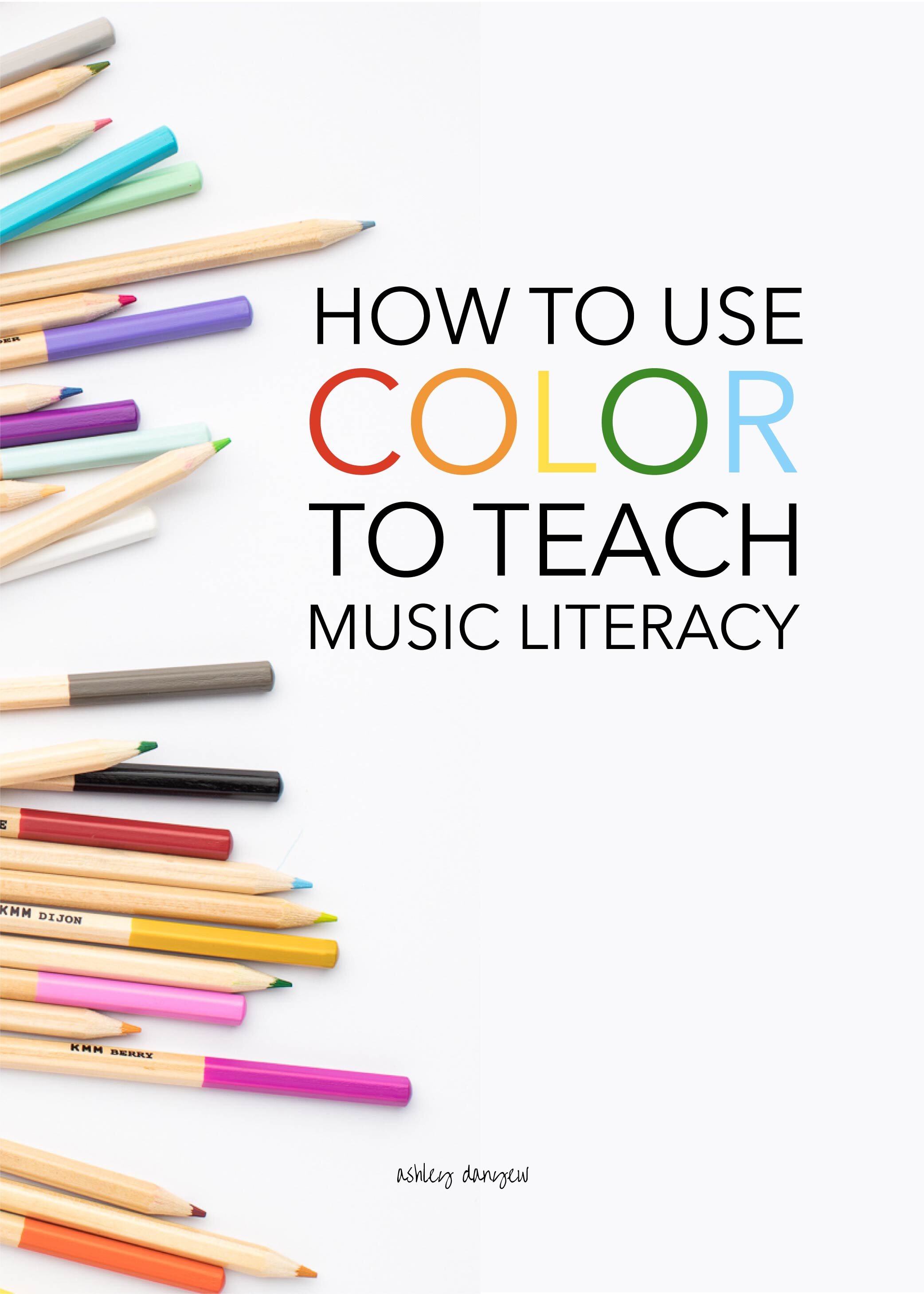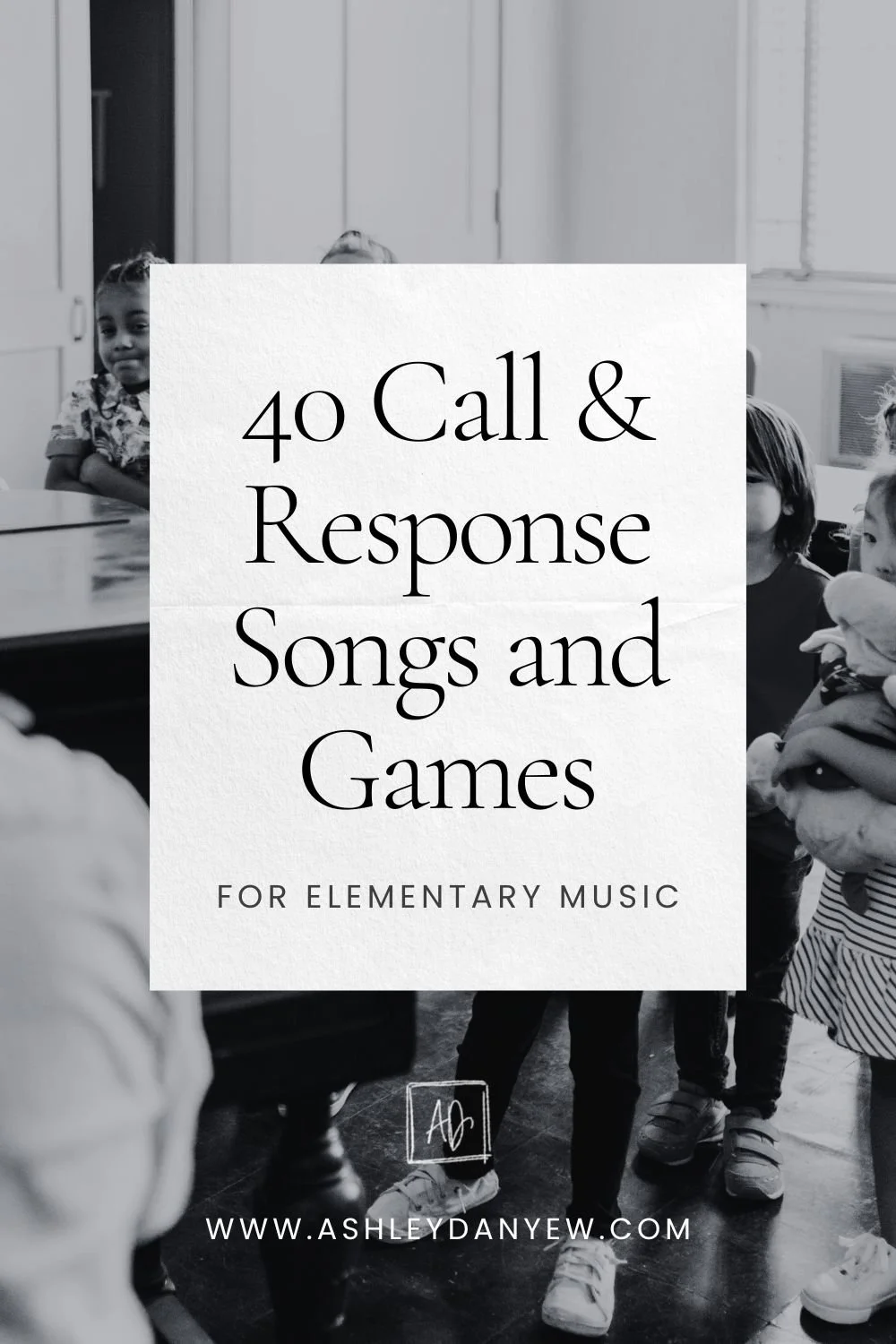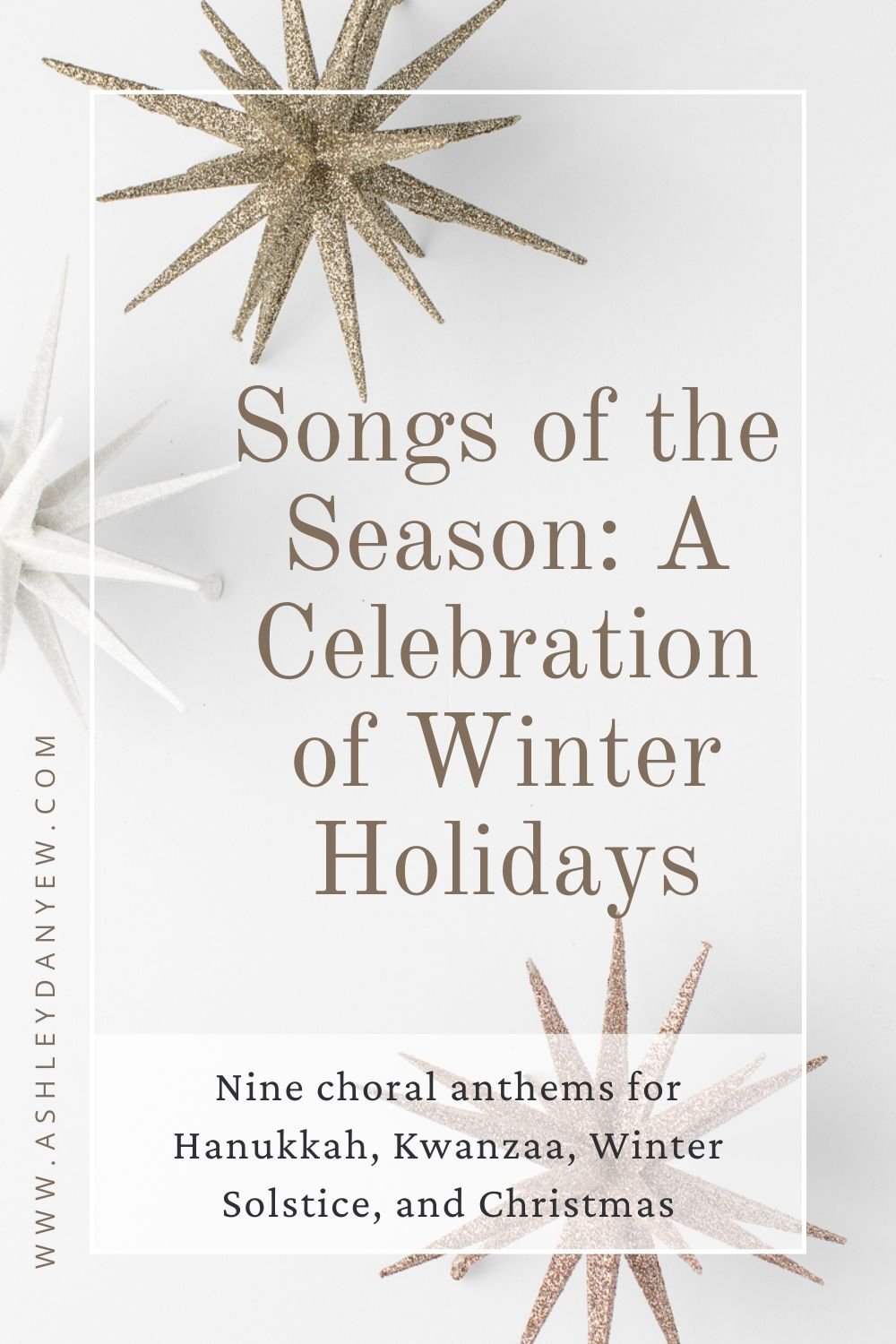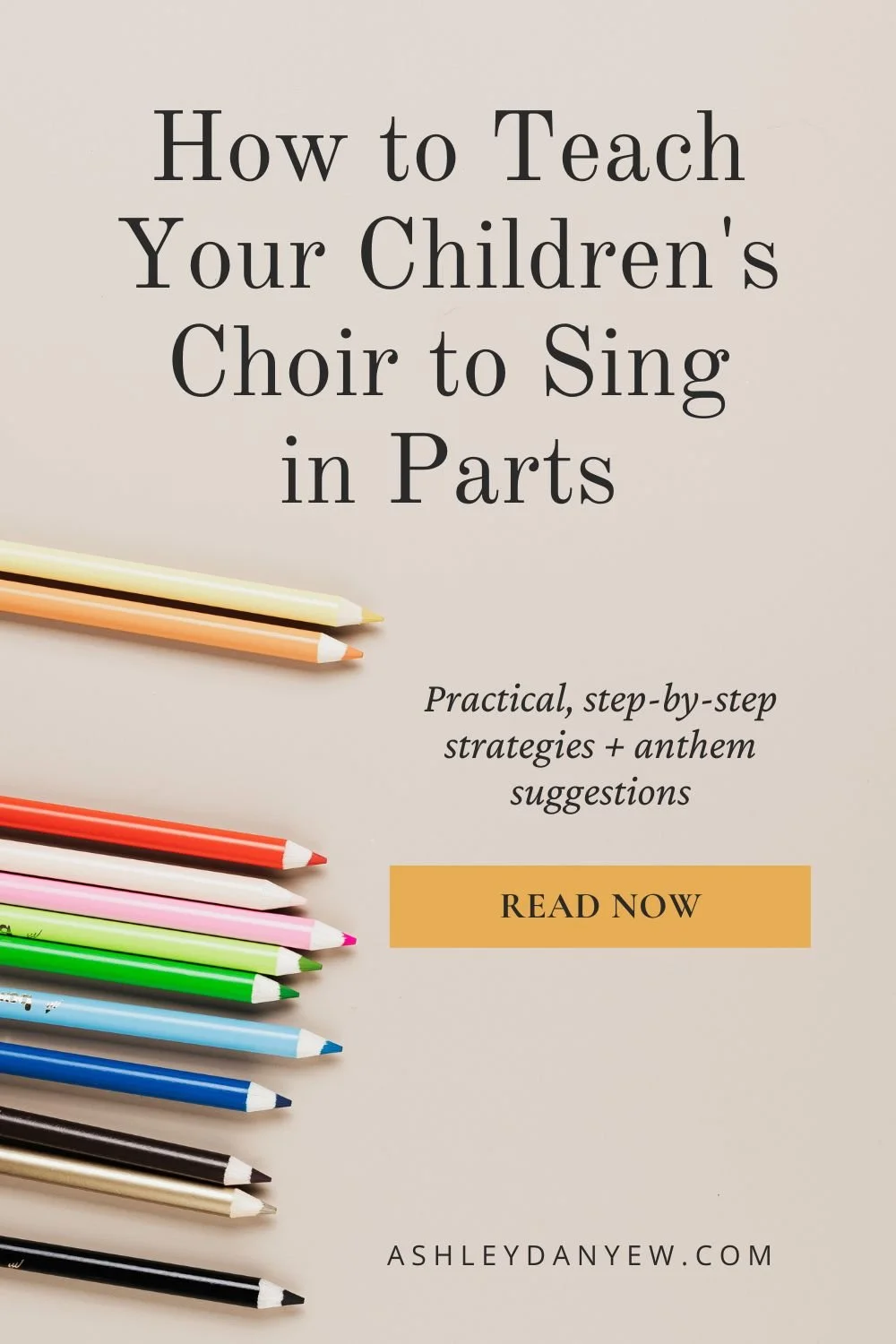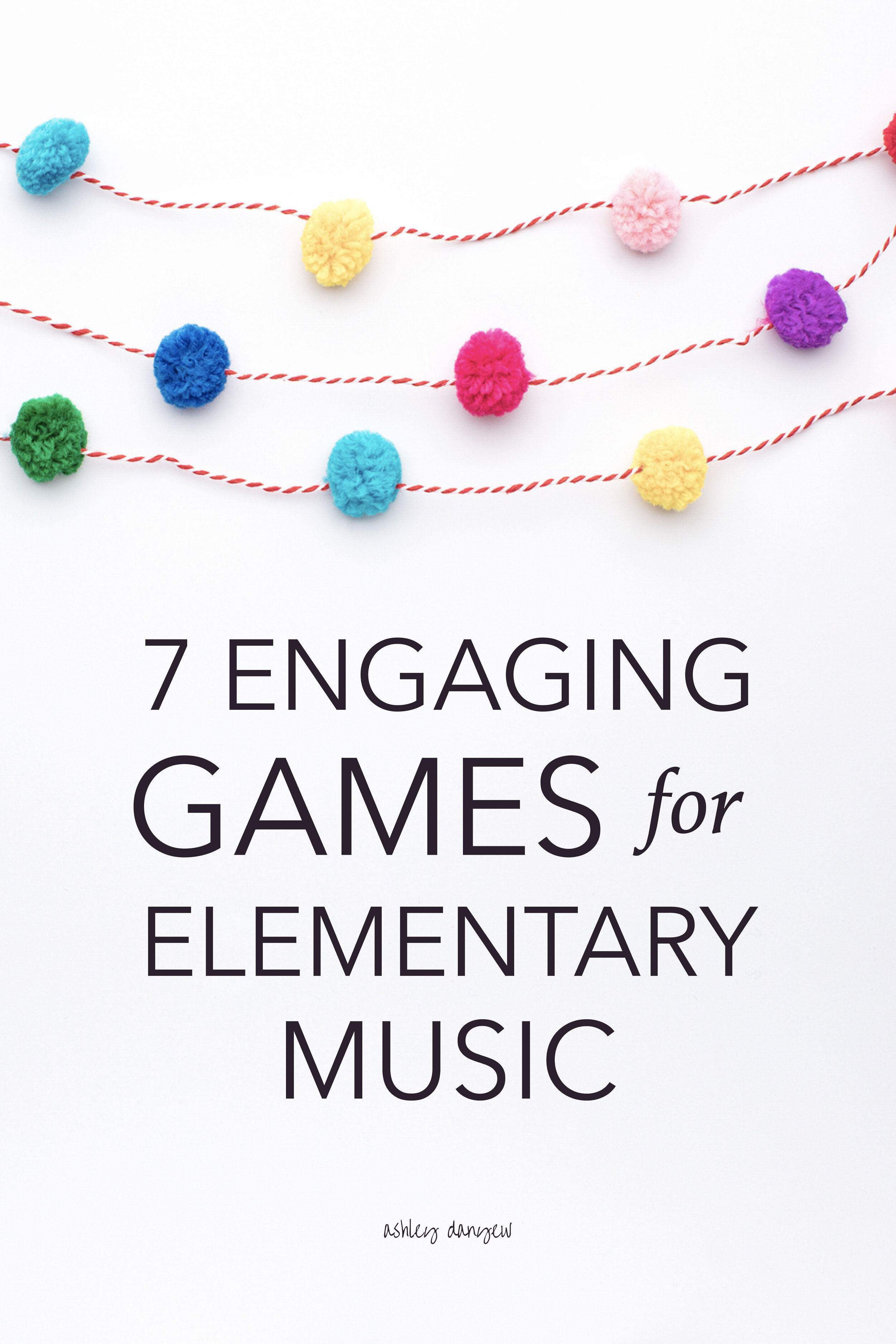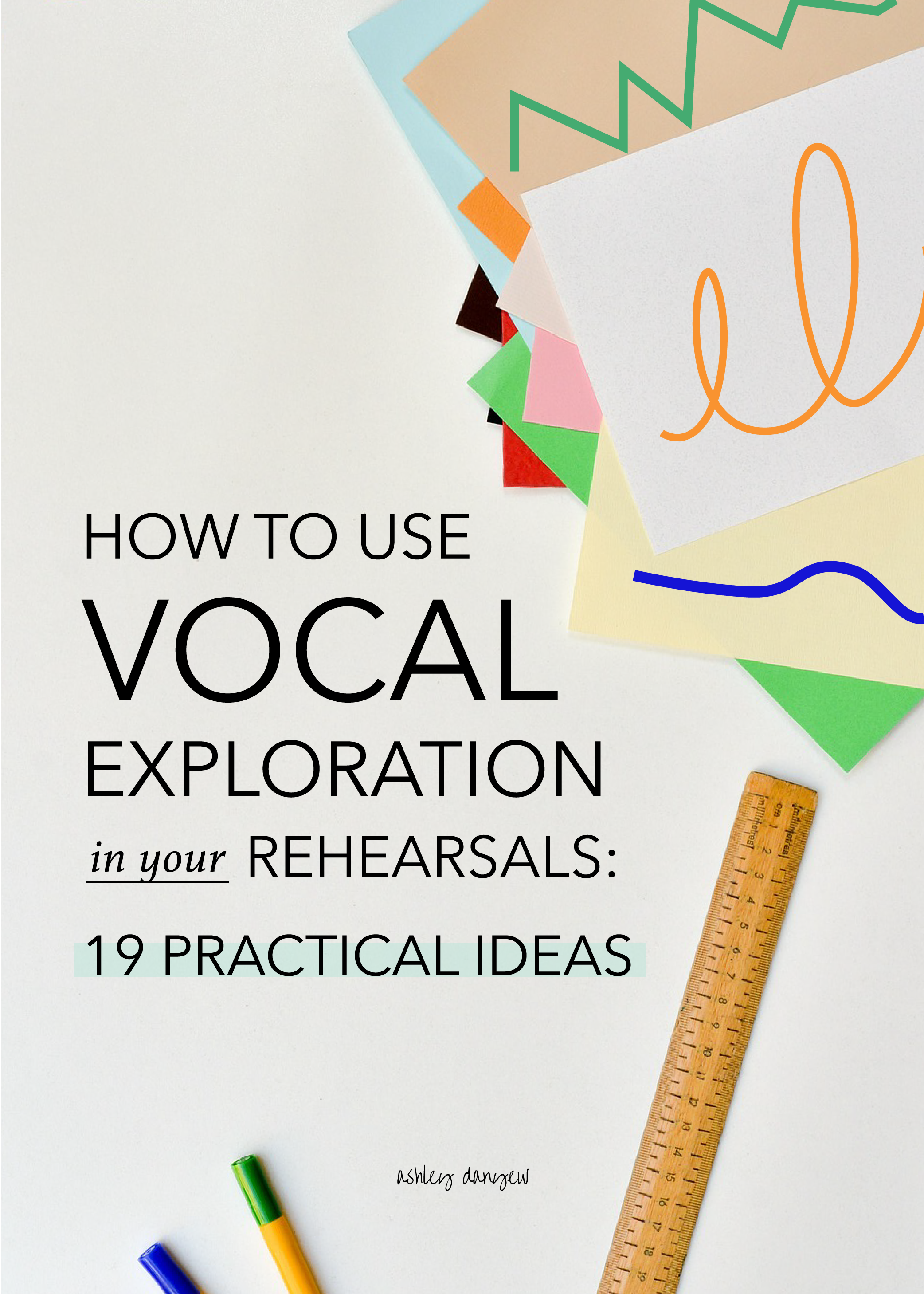If you walk into an elementary classroom, you might notice that everything is color-coded: signs and charts on the wall to labels on bins to pieces of tape marking certain spots on the floor.
This is because colors are easy for most young children to recognize and differentiate between.
But in music, our baseline is black and white, the colors of standard notation. When first introducing music-reading, it can be challenging for young students to recognize patterns and organize the content visually when everything is black and white.
For this reason, color can be a helpful tool when teaching music literacy and developing music-reading skills. “When we use color in a systematic way it can help students retain information better than just using black and white.” (source)
For some, this might look like using colored notation, where each note of the scale is represented by a different color. This is often used in beginning handbell and Boomwhacker music.
But this isn’t the only way to teach with color.
Today, I’m sharing four simple ways to use color to teach music literacy. But first, let’s talk about some of the benefits of using color as a teaching tool.
The Benefits of Using Color
Color provides a quick way of sorting and organizing visual elements, especially elements that are the same.
In an article on color-coding your classroom, Amy Curletto wrote, “Color coding is especially beneficial for students who are non-readers or who are just learning to read. When color is involved, grouping, material organization, and differentiation become much, much easier.” (source)
When things are color-coded, children can easily learn how to match things that are the same and identify things that are similar, but different. Amy Curletto explained, “Color helps break concepts down and make them easier to digest.” (source)
Think about what that might look like in music: note values, melodic patterns, rhythmic patterns, steps vs. skips, dynamic markings, high vs. low, white keys vs. black keys on the piano, vowel sounds (colors!), and much more.
And this isn’t just for children; think about how helpful it is to organize and sort things by color for youth and adults, especially concepts that are new and unfamiliar.
What does this look like in a practical sense?
That’s where today’s post comes in. Here are four unique ways to introduce color into your music-teaching and score-study work with students of all ages:
How to Use Color to Teach Music Literacy
*Disclosure: I get commissions for purchases made through links in this post.
Use Colored Notation
If you used Boomwhackers, handbells, or handchimes in your teaching, you’ve likely encountered colored notation. This is a helpful way for young musicians and new readers to identify different pitches on the staff and correlating Boomwhacker, bell, or chime.
I recommend using colored notation in this context, when each person is responsible for playing only 1-2 notes (and therefore, keeping track of only 1-2 colors).
Boomwhackers and small metal handbells come in rainbow colors: one color for each note in the diatonic (or chromatic) scale.
Handchimes are only available in aluminum, but there are a few ways you can color-code them for your group:
Purchase a set of colored chime bands by ChimeWorks
Wrap a strip of colored electrical tape around each handle
Use a set of colored dot stickers to mark each one
Wrap a rainbow-colored hair tie around each handle
Once you have a set of color-coded instruments, you can use colored notation to help children learn to follow their part, whether they’re reading colored letter names on a word chart or notes on a musical staff.
Looking for a good starting point?
This digital, reproducible collection includes six children’s songs using colored notation — perfect for Boomwhackers, handbells, or handchimes.
Each song includes two versions: a word chart with colored letter names and a musical score with colored noteheads.
Colored Notation
Creative resource ideas:
Color-coded chord cards - a great introduction to bell- or chime-ringing use the chord approach
Color-coded fabric staff - includes 96 colored felt circles that match the colors of the Rhythm Band handbells. The junior size (18"x14") is small enough to hold or sit on a music stand; the larger size (28"x28") has a rope at the top for easy hanging. It’s a great visual teaching aid for younger elementary children. Here is a quick video demonstration of how to use the color-coded fabric staff.
Colored marker set - great for creating your own chart-sized music or color-coding traditional black-and-white notation
Colored dot stickers - create your own chart-sized notation by using these stickers as the noteheads
Colored music notation stickers - great for creating individual music scores or as a fun composing activity for older elementary students
Flat.io - create your own color-coded scores using Flat, a web-based music notation software ($6.99/mo. or $49/year to use this feature). Here’s a helpful tutorial.
ChimeWorks Icon Chart - a suggested pairing of colored notation and shape-note notation.
Color-Code Musical Form
Color is a great way to mark musical form and indicate different sections of a piece, especially when listening to a new song or piece (without notation).
Using 8.5x11” sheets of paper or cardstock, choose a different color to represent each section of a piece (displayed at the front of the room, for all to see). If you’re working one-on-one or with a small group, consider using paint chips. Cut the paint chip cards apart ahead of time and make a set for each student.
Similar to what I mentioned above, consider cutting each one into a different shape, as well (e.g. triangle, square, circle).
Creative resource ideas:
Paint chip cards — free from your local hardware store
Colored paper or cardstock
Colored bean bags - this listing is for corn hole bean bags, available in 17 different colors.
Color-Code Musical Patterns and Motives
I use this strategy all the time with my elementary piano students. We are always identifying patterns that are the same and different in our music, and often, I will have them draw boxes around measures that are the same using a colored marker or highlighter. This is a quick and easy way to see how the music is organized, recognize phrase construction, and understand how the patterns fit together.
Similarly, you might choose to color-code a short rhythmic pattern, even if the pitches are different OR a short melodic pattern, even if the rhythm is different.
I recommend choosing 1-2 colors for this type of project. Keep it simple and uncluttered so the important element (repeated patterns and motives) remains prominent.
Creative resource ideas:
Color-Code Dynamic Markings
This is a fun way to observe dynamic markings in the score.
I don’t know about you, but my students don’t often pay attention to dynamic markings in a new piece (and sometimes even in a piece we’ve been working on for a few weeks!).
I like to encourage my students to play with dynamic expression from the beginning of learning a piece, rather than thinking of dynamics as something to add during the polishing phase. As such, sometimes we’ll take a minute early on in the process to study the score and color-code the dynamics using something like this:
piano = blue
mezzo piano = purple
mezzo forte = pink
forte = orange
Here’s a little insight into the psychology of these color choices:
Orange is a bright, vibrant color, though not as dominant as red. When used to highlight something, orange may help learners retain information. Similarly, “blue ink, or blue highlighting can be used to help improve reading comprehension.” (source)
Creative resource ideas:
Colored pencils - great for circling or outlining the dynamic markings, highlighting crescendi and decrescendi, and adding in some of your own dynamic markings.
Erasable pens - circle or trace dynamic markings and use for score-study, but then erase your markings when the dynamics are ingrained or the colored markings are no longer needed so you can play from a clean score.
Washi tape - easy to add and remove, plus most of the time, it’s semi-transparent so you can tape right over the dynamic markings in the score and still see it show through.
Do you use color-coding in your music-teaching? What are your favorite strategies?


